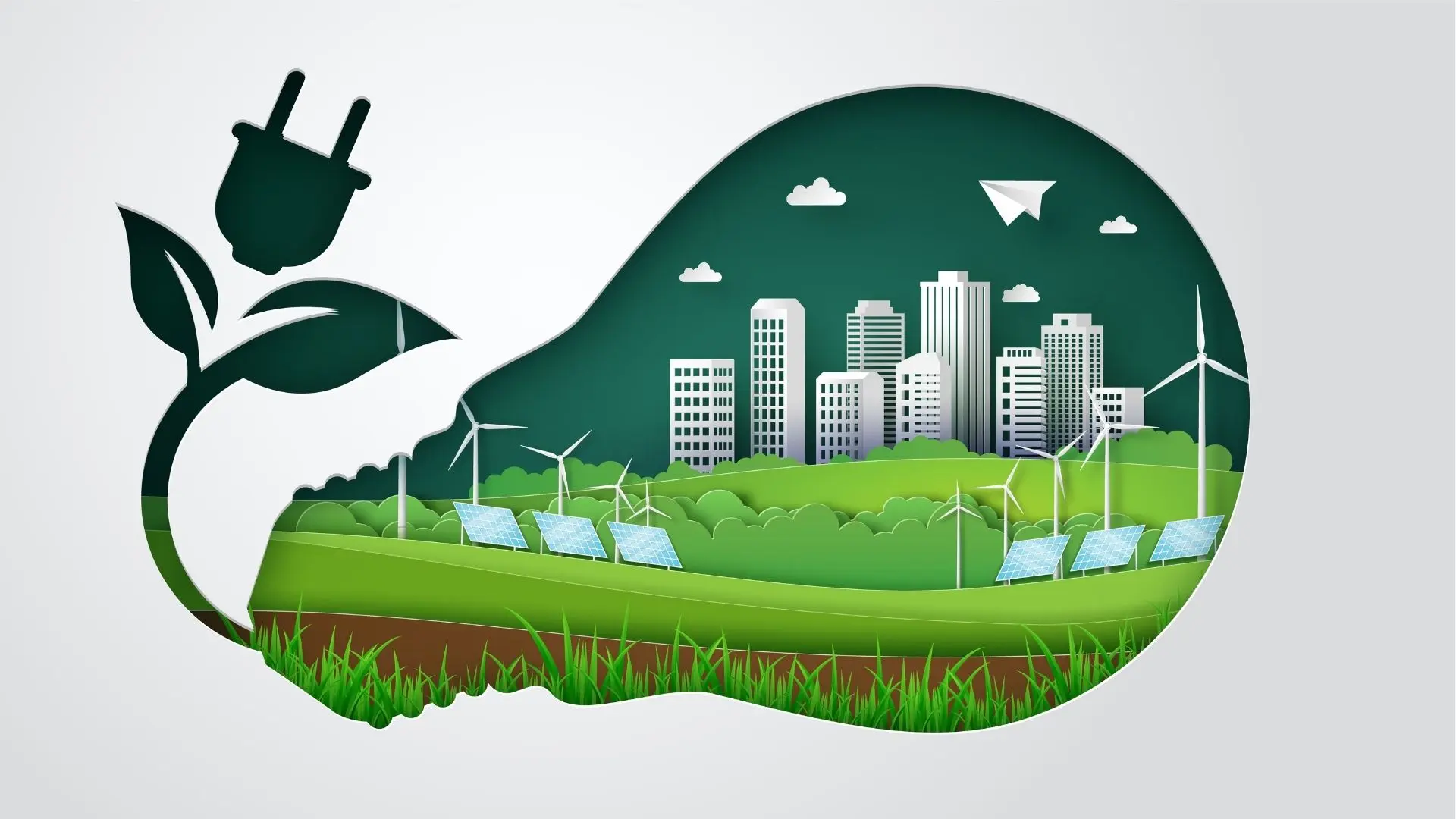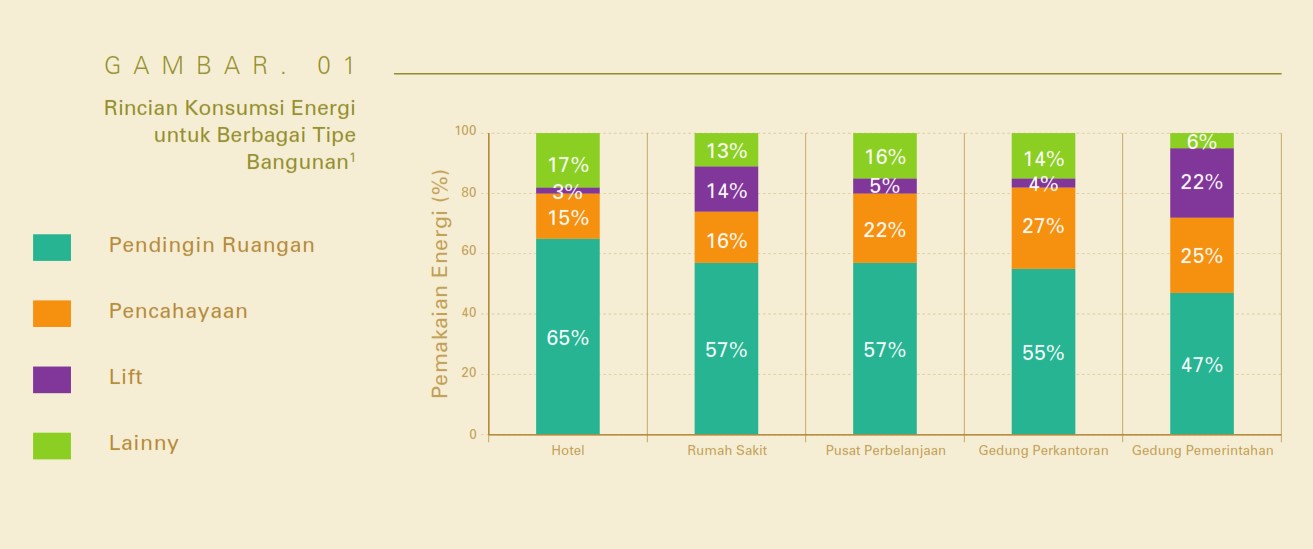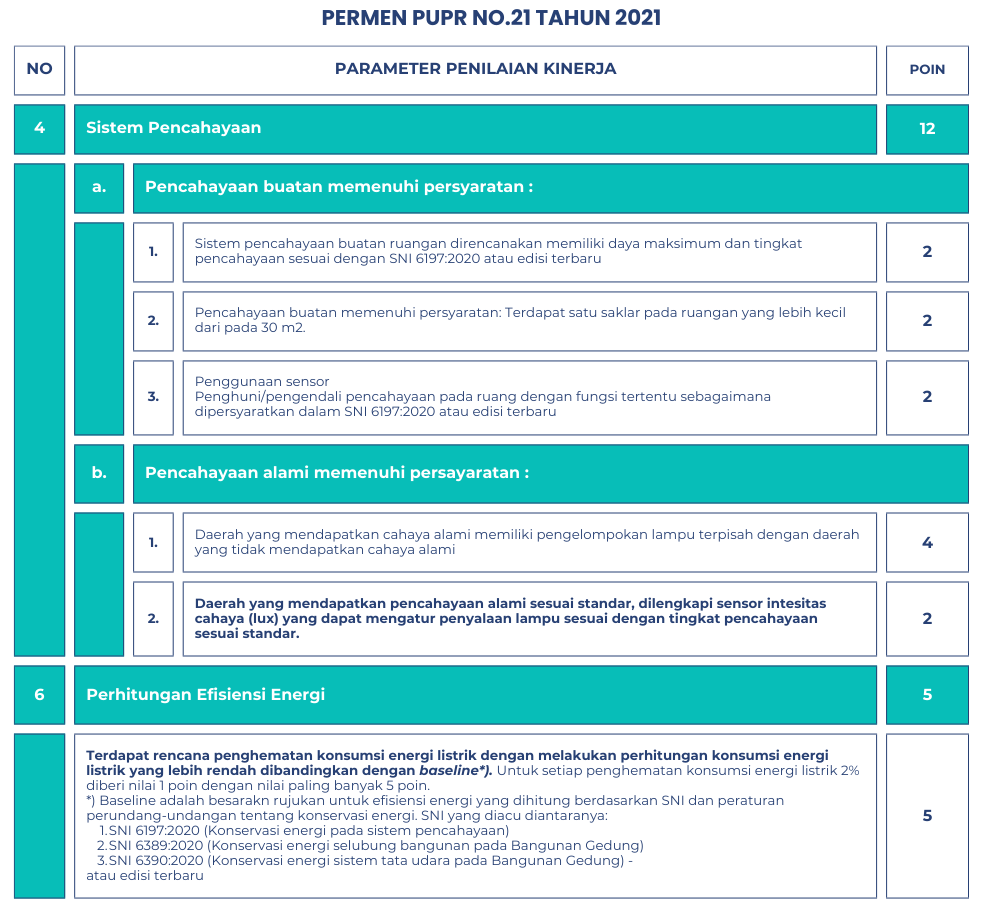LIGHTING IS THE SECOND LARGEST ENERGY CONSUMER IN BUILDINGS

#ENERGY EFFICIENCY
As we know, lighting is one of the crucial aspects of our lives. The most perfect light source — the sun — becomes our main reference for daily activities during the day. Therefore, we heavily rely on artificial lighting at night for various functional areas.
Lighting System Regulations
Green Buildings (BGH), or what we refer to as Bangunan Gedung Hijau, are buildings that are designed, constructed, and operated with attention to environmental impacts and human health. Buildings with BGH certification apply key principles of sustainable or environmentally friendly development. The goal is to reduce the negative impacts of buildings on the environment and improve the quality of life for occupants. This is achieved by minimizing the use of natural resources, optimizing energy efficiency, and reducing waste.

Source: “Building Envelope” – Jakarta Green Building User Guide
According to the book “Selubung Bangunan” (Building Envelope): Jakarta Green Building User Guide, lighting ranks second in building energy consumption. This means that good lighting planning is necessary to reduce energy use. In lighting design, the selection of lamp types and placement is based on the required "Minimum Average Illumination Level", in accordance with SNI 6197-2020: Energy Conservation in Lighting Systems.
When planning a building’s lighting system, there are several guidelines to ensure quality lighting. The regulations regarding green buildings are detailed in Regulation of the Minister of Public Works and Public Housing No. 21 of 2022.

Based on the parameter points table, the use of sensors in lighting systems scores highly with a total of 4 points. This includes:
- 2 points for artificial lighting sensors, such as motion sensors for service areas (e.g., emergency staircases), and
- 2 points for natural lighting sensors that adjust light intensity based on the amount of daylight entering the room.